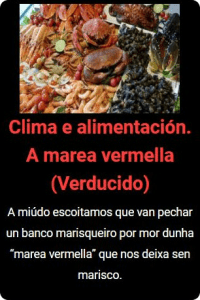
monografías
eltiempoentuojete
Climate & live. Weather and mortality
Despite living in an organised and technologically developed society, death rates increase in winter and during heat waves in summer.
Statistics say that in Europe, deaths have their lowest level at 17°C, and increase when it rises or falls below that level.
In the past, deaths were counted during the winter and compared with the average annual number of deaths. The surplus was winter mortality. Simple to calculate, but inaccurate. If summer mortality exceeded winter mortality, it could mean that winter mortality did not occur, even though it would have caused many deaths.
Today, the data are taken on a daily basis.
In a study of Great Britain, it is estimated that 40,000 people die each year from the cold, as opposed to 1,000 deaths from heat (data per million inhabitants).
Cold and death
Coronary and cerebral thrombosis (cardiac arrest and stroke) account for 50% of cold deaths. Respiratory diseases account for 25%. In these cases they are direct causes. The cold coagulates the blood easily and being more concentrated favors the appearance of thrombosis by clots in the arteries. Respiratory infections increase fibrinogen levels, again promoting coagulation.
The reasons for infections are varied. In the cold, people tend to gather in poorly ventilated places and facilitate the spread of viruses. Breathing cold air produces a cough and a runny nose. In addition, other studies warn of a reduction in the immune response during cold weather. It increases with heat.
Severe flu can lead to pneumonia by passing the infection from the mouth or nose to the bronchi and from there to the lungs.
The end of the flu
In the past, an influenza epidemic claimed tens of thousands of lives every two or three years. Vaccines have been available since the 1940s and on a massive scale since the 1970s, but the significant decline was prior to immunization. And hygiene was paramount. The strongest strains came from the typical bird flu (Avian Flu) that still emerges from time to time, bred on mass-production chicken farms. Separation of man from beasts worked. The last pandemic episode was in 1918.
After the decline in flu deaths, another cause could be hypothermia. But in Europe, hypothermia is rare in peacetime.
Another factor would be the lack of vitamins in fresh food in winter. Vitamin C protects against thrombosis and is present in fruits and vegetables, along with the Sun.
Nowadays it is easy to find any food at any time of the year, and if you are looking for life, even the Sun.
In the same way, heat-related mortality is caused by coronary and cerebral thrombosis, the result of hemoconcentration and the loss of water and salts through sweating. To a lesser extent, hyperthermia and heart fatigue also cause deaths.
Climate change and mortality
The existence of global warming has been evident for 30 years, has a human factor and continues to advance.
From the beginning it was thought that we would live again a malaria pandemic, when the insects return to colder climates, but studies confirm that both hygiene and lifestyle, along with modern farming methods would make this possibility very unlikely. (Malaria was endemic in Europe and Russia and was eradicated. In Spain, according to the WHO, in 1964.
When we talk about global warming, we think about dying of heat. But with more deaths from cold than from heat, the overall effect would be welcome.
A study on G. Brittany indicates that, with an increase of +2º C in average temperatures, the annual increase in heat deaths would be 2,000. But that same increase would cause 20,000 fewer deaths from the cold.
A population survey shows that the coldest countries, such as Finland, are better prepared for the cold and there is no perceived increase in winter deaths. The opposite is the case in warmer countries, where more people die from cold in winter, such as G. Brittany or Greece. These countries are more effective in the fight against heat, as is the case of the “siesta” in southern Europe.
In other words, even though global warming could lower winter cold mortality rates, it does not seem sufficient unless conditions improve that reduce exposure to cold both indoors and outdoors. In short, keep warm, avoid hospitals and other centres of concentration of people, put on the heating and, just in case, put another blanket on the bed…
Sources:















